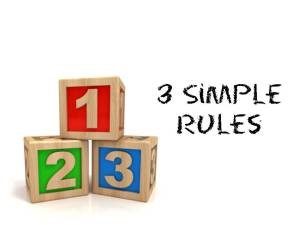Who does not fear risk? We all do, especially when it involves money. While risk is an inherent part of business, a good businessman chooses risks wisely. This is especially true in the mortgage industry which is rife with unscrupulous lenders and unreliable borrowers.
Understandably, many mortgage companies are reluctant to finance people with bad credit history or could not plunk down cash for downpayment. This is where a bad credit mortgage broker comes in. A bad credit mortgage broker assists people who have bad credit score, low income, or a long history of loan rejections.
Mortgage Miracle Worker?
A bad credit mortgage broker can help you get your loan approved in no time at all! In fact, the processing time of your loan is much shorter compared to that of programs offered by banks and credit unions. Make no mistake, however. While a bad credit mortgage broker can work miracles for you, he does so at a price. You will have to expend more money to get a bad credit loan. Ultimately, the loan you will qualify for will have a higher interest rate and closing fees.
Is Your Broker Trying to Break You?
Do higher interest rates and closing fees mean your bad credit mortgage broker is pulling a fast one on you? Not at all. This is standard practice in the industry. You have to remember that your bad credit history makes you a greater risk than most. The only reason mortgage companies would willingly take on the kind of risk you represent is if it proves lucrative for them in the end.
Compare, Compare, Compare
You have pretty much established that there’s no way you can avoid higher interest rates and closing fees. How do you ensure you get the best deal possible? Simple. Make the rounds among bad credit mortgage brokers and compare the deals they are willing to offer. Check their rates. Even though you have to pay a higher rate, this does not mean you cannot pick the one that is the most reasonable and favourable.
The Pain of Penalties
Some bad credit mortgage loans carry a pre-payment penalty. But before you berate your bad credit mortgage broker over this, think. This is not your broker’s fault. Again, this is an unavoidable pain in the neck for people with bad credit. Pre-payment penalties may be payable from six months to three years. What this means is that before you can pay off the loan, you first have to pay humongous sums of interest for at least six months. If you cannot avoid a pre-payment penalty altogether, opt for the loan with the shortest term. This way, you can pay off the loan quickly without dishing out money for the penalty.
Don’t Worry, Just Wait
What if the rates prove too high for you? You have another option. Wait. It’s been said the best things in life are worth waiting for, and this mantra holds true for getting a mortgage even with bad credit. Wait a while before you contact a bad credit mortgage broker. Use the time on your hands to improve your credit score. When you’ve successfully done this, you can then qualify for a loan with a lower interest rate.
Risk is terrifying, but it’s unavoidable. In applying for a mortgage, a bad credit mortgage broker can give you a makeover – from being a walking liability to a sound investment

Ph: 416-817-7757 Fax: 416-352-7490
Em: Deneika@lendmorefinancial.ca
Em: DeneikaFletcher@dominionlending.ca
WEB: DeneikaFletcher.com


 Refinancing both your first and second mortgages will result in one low monthly payment that could save you thousands in interest charges. By combining both mortgages, you qualify for lower rates than if you refinance separately. You can see a significant savings with your second mortgage refinance, which is often several points higher than your first mortgage rates. You will also save on application fees and other closing costs.
Refinancing both your first and second mortgages will result in one low monthly payment that could save you thousands in interest charges. By combining both mortgages, you qualify for lower rates than if you refinance separately. You can see a significant savings with your second mortgage refinance, which is often several points higher than your first mortgage rates. You will also save on application fees and other closing costs. 
